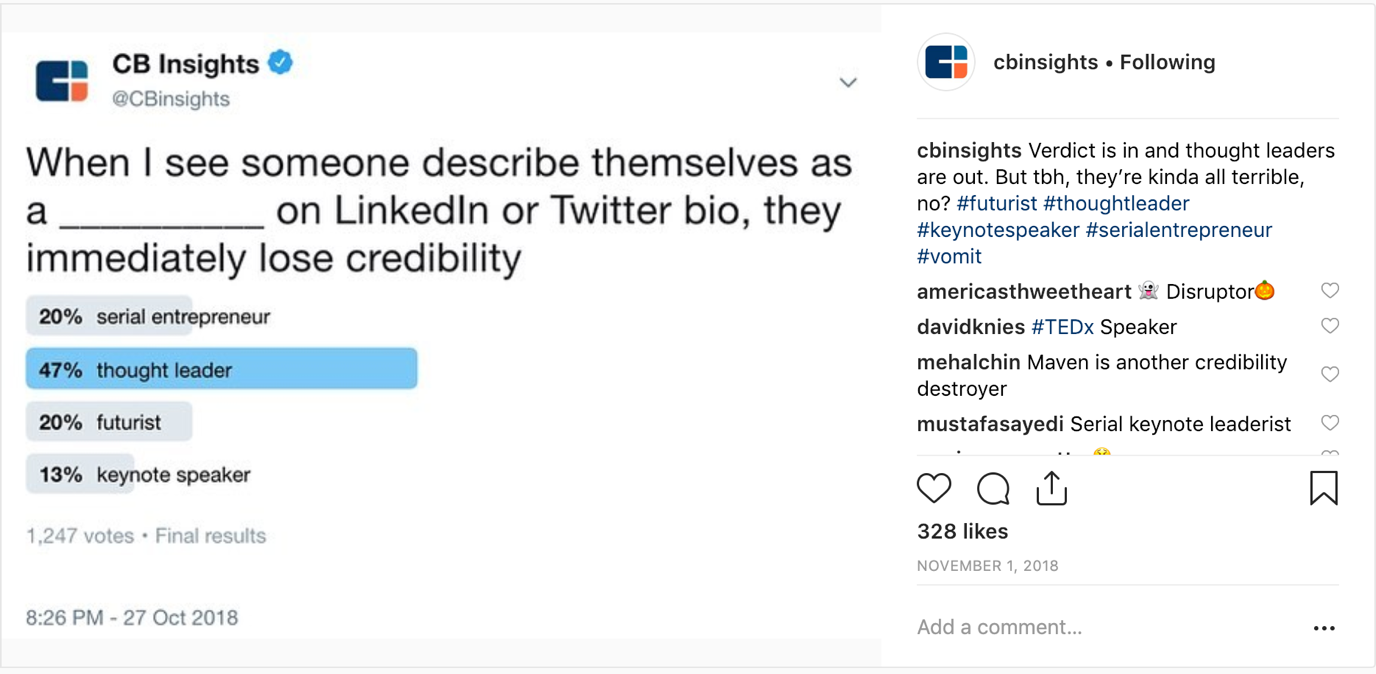 Logo
Logo
EXPERT INSIGHTS
May-10-2019
The KUDOS Test: 5 Criteria Found in all Great Social Content
Leo Ryan
The ever-growing influence of social media is undeniable, with brands across industries increasing their social budgets and activity to keep pace. Despite committing more resources to produce social content, many organizations still lack a strong understanding of how to evaluate social media content ideas and weed out what doesn't work for the channel. There persists a sort of willful blindness to what makes great social media content.
The reasons for this vary by individual and organization. One reason is an ongoing addiction to broadcast media where a content idea is evaluated on its ability to smack the audience over the head and be remembered, euphemistically referred to in the pre-testing process as "recall." Another is the large volume of nonsense spouted by self-appointed social media gurus and thought leaders that clutters conference floors, pay-to-play media outlets, and coffee shops. One of my happiest moments recently was seeing this great piece of research from CBInsights:

So how can a beleaguered marketing director or social media manager ensure each piece of social media content provides the most bang for its buck? The temptation is to continue with self-serving broadcast habits of old and like a bore at a dinner party, talk only about yourself. I’m looking at you: social media influencer. Possibly worse is the opposite impulse: to rehash every meme and try to appeal to as broad of an audience as possible, thereby being relevant to no one. #AnyBrandLackingADistinctPointOfView
Why You Need the KUDOS Test
To effectively consider both business needs and the need to be externally relevant, a simple, five part rubric is required. For the past ten years, I have worked with a variety of B2B and B2C brands who have all been able to employ it successfully. It's called KUDOS.
KUDOS is an acronym that embodies the essential attributes of great social media content: Knowledgeable, Useful, Desirable, Open, and Shareable.
While I was working in advertising, I found that brief templates were always based on the premise of audience manipulation. In other words: “What do you want them to think, feel, or do as a result of this communication?" There was no recognition that digital and social marketing are grounded in dialogue.
Social differs from traditional advertising in that it can only work if it achieves outcomes for both the audience and the brand. In the words of the now legendary Cluetrain Manifesto: "Markets are nothing more than conversations." And as your aunt has no doubt told you: “Conversations are two way; you need to be both interested and interesting.”
The KUDOS test provides a simple checklist to run through to ensure your content is exactly that: interesting to, but also interested in, its audience. By adhering to KUDOS, you’ll be able to evaluate your content ideas and social media activity to ensure they are contributing to your social capital — the wellspring of goodwill that you can build with your online audience — and not making you "that brand."
The KUDOS test provides a simple checklist to run through to ensure your content is interesting to, but also interested in, its audience.
How to Evaluate Content Ideas Using the KUDOS Test
Knowledgeable:
Your social media content should actively demonstrate knowledge that is unique to your brand, product, or service. It should be knowledge that your audience will be grateful to receive and find relevant to what you stand for. Social listening can help you understand what knowledge your audience wants to receive.
Useful:
Useful begs the question for the audience: Is this knowledge that can be applied and is the usage clear and easy to understand? And for the brand, it helps answer an important business question: Is it assisting with awareness, consideration, or conversion?
Desirable:
Desirable is a step up from useful. Social media activity is desirable when both the brand and the audience actively want it. Think of eating your greens: useful, but not necessarily desirable. If something is desirable to your audience, in a tasty, can't-get enough-of-it kind of way, you'll have strong engagement.
Open:
To be open with your brand’s social media activity means to be honest and transparent. Don't just be open about the parts of the message that are desirable to the brand, but the whole picture, warts and all. An audience will respond very actively and negatively when they believe a brand has been dishonest with them, especially when it's about a concern or perceived brand failure. Such a negative reaction doesn't even require active dishonesty, just a lack of being completely open.
Shareable:
Finally, consider if the adherence to all of the above attributes has contributed to creating something that your audience will want to share. Does it help them to demonstrate their own knowledge, to amplify their identity and values, or to assist others? Ensure the content checks off this last requirement so it spreads beyond your account.
The process of running proposed content through the KUDOS test can help brands decide if that content will be effective and revise it or reject it if not. The KUDOS test can check and balance the needs of both brand and audience. It can also help establish how this content should be measured so you can assess its success. So the next time you have an idea for social media content, make sure to use the KUDOS test to ensure it's worth your valuable time.
Editor's note: This article was adapted from the Contagious Report: Social Media Metrics, written by Leo Ryan and Iain Macmillan, commissioned by the creative and strategic intelligence service, www.contagious.com.











